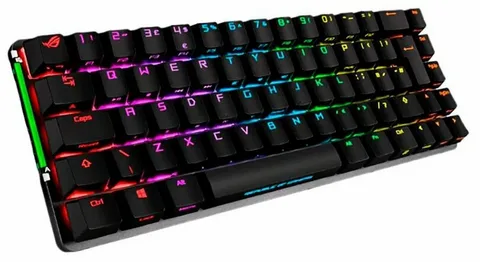Gaming keyboards have come a long way since their inception, evolving alongside the rapid advancements in gaming technology and player demands. Understanding The Evolution of the Gaming Keyboard: From Classic to Cutting-Edge reveals how these devices have transformed from simple input tools into highly specialized gaming peripherals designed to enhance performance and experience.
Early Beginnings: The Classic Keyboard Era
In the early days of PC gaming, gamers used standard keyboards originally designed for typing rather than gaming. These classic keyboards were typically membrane-based, with rubber domes underneath the keys that registered keystrokes. While functional for everyday tasks, these keyboards lacked the responsiveness and durability gamers needed for fast-paced gameplay.
Gamers quickly realized that a better keyboard could improve their in-game performance, leading to the first wave of modifications and custom keyboards specifically aimed at gamers. The focus was mainly on improving key responsiveness and layout ergonomics.
Mechanical Keyboards: A Game-Changer
The next significant milestone in The Evolution of the Gaming Keyboard: From Classic to Cutting-Edge was the rise of mechanical keyboards. Unlike membrane keyboards, mechanical keyboards use individual mechanical switches for each key, providing tactile feedback, faster response times, and greater durability.
Mechanical switches come in various types, each with distinct characteristics suited to different gaming styles—linear switches for smooth keystrokes, tactile switches for feedback, and clicky switches for auditory confirmation. This customization allowed gamers to tailor their keyboards to their preferences, vastly improving the gaming experience.
The Rise of RGB and Programmable Features
As technology advanced, gaming keyboards began integrating features beyond simple typing. RGB lighting became a defining characteristic, enabling players to customize the appearance of their keyboards with millions of colors and lighting effects. This trend not only added aesthetic value but also helped players identify key bindings during intense gameplay.
Programmable keys and macro functions further pushed the boundaries, allowing gamers to assign complex commands or sequences to a single key. This increased efficiency and provided a competitive edge, marking another important step in The Evolution of the Gaming Keyboard: From Classic to Cutting-Edge.
Cutting-Edge Innovations in Gaming Keyboards
Today’s gaming keyboards are equipped with cutting-edge technology that continues to push the limits. Features like low-latency wireless connectivity, hot-swappable switches, and advanced software suites offer unprecedented customization and convenience.
Some keyboards now incorporate adaptive mechanical switches that can change their actuation force on the fly, and others use AI-driven software to optimize key responses based on gameplay style. Enhanced ergonomics, split designs, and compact layouts also reflect the growing focus on player comfort and portability.
Conclusion: The Future of Gaming Keyboards
The journey through The Evolution of the Gaming Keyboard: From Classic to Cutting-Edge highlights how far these essential gaming tools have come. From simple membrane designs to sophisticated, customizable devices, gaming keyboards continue to evolve alongside the needs of gamers.
As technology progresses, we can expect even more innovative features that blend hardware and software to create immersive, responsive, and personalized gaming experiences. The gaming keyboard, once a basic input device, has truly become a cornerstone of competitive and casual gaming alike.


